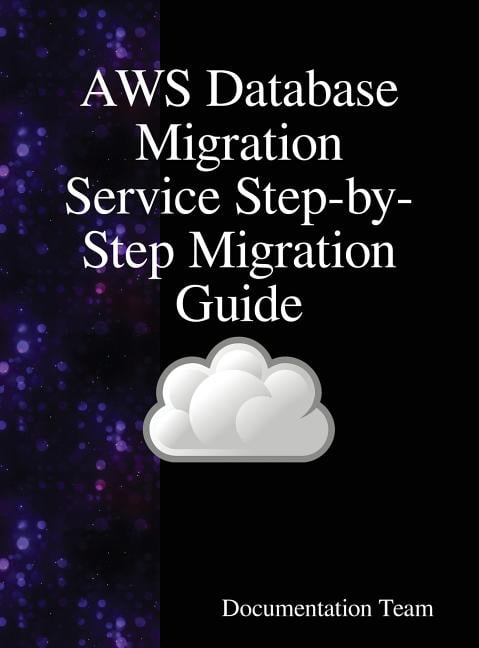AWS Database Migration can seem daunting. But it’s more manageable than you think.
Also Read
Navigating the complexities of migrating databases to AWS can be simplified with the right guidance. This step-by-step guide aims to demystify the process, breaking it down into clear, actionable steps. Whether you’re shifting data from on-premises databases or migrating from other cloud services, understanding the key stages is crucial.
We’ll explore planning, execution, and post-migration tasks to ensure your transition is smooth. By the end of this guide, you’ll have a solid grasp of the AWS Database Migration process and be well-equipped to handle your own migration projects with confidence. Ready to dive in? Let’s get started!

Credit: www.ideamotive.co
Introduction To Aws Database Migration
Moving your database to AWS can save money. It also improves performance. AWS offers many tools to help. Your data becomes more secure. You can access your database from anywhere. This is very important for businesses. They need to work fast. AWS helps with that.
Migration is not easy. It can be slow. Data loss may happen. Compatibility issues might arise. Planning is key. You need the right team. Testing before and after is a must. Backups are crucial. Keep your data safe. Many find these steps hard. But with care, success is possible.

Credit: www.amazon.com
Preparing For Migration
First, examine your current database. Identify its structure and size. Note the data types and relationships. Check for performance issues. Determine if any data should be cleaned or archived. Understanding your database helps in planning the migration.
Set clear goals for your migration. Define the desired outcome. Consider cost, performance, and reliability. Decide on a timeline for the migration. Ensure all stakeholders agree on these goals. This will guide your migration process and keep it on track.
Choosing The Right Aws Service
AWS offers many database services. You need to choose the best one. Amazon RDS is popular. It supports many database engines. These include MySQL, PostgreSQL, and more. Amazon DynamoDB is another choice. It is a NoSQL database. It is good for fast and flexible scaling.
Consider your project needs. Do you need high availability? Amazon Aurora might be best. It is compatible with MySQL and PostgreSQL. Do you need a fully managed database? Amazon RDS is a good option. For document storage, Amazon DocumentDB is suitable. It is compatible with MongoDB. Think about your data structure and access patterns. This helps in choosing the right service.
Planning The Migration
A good strategy is key to a smooth migration. First, assess your current database. This helps you understand what needs to be moved. Next, choose the right AWS services. Options include Amazon RDS and DynamoDB. Think about data security. Encrypt data for protection. Also, plan for downtime. Schedule it during low-usage periods to minimize impact.
Setting a timeline is important. Break down tasks into smaller steps. Assign deadlines for each step. Start with pre-migration tasks. These include assessments and choosing services. Then plan the migration phase. Finally, schedule post-migration tasks. These include testing and monitoring. This helps ensure a smooth process.
Setting Up The Aws Environment
First, create an AWS account if you don’t have one. Visit the AWS website and sign up. You will need to provide credit card details. AWS offers a free tier for new users. This helps you explore services without cost. Once registered, log into the AWS Management Console. Here, you can manage all AWS services. Make sure to keep your account details secure.
Security is important in AWS. Start by setting up Identity and Access Management (IAM). IAM helps control access to AWS services. Create IAM users for each team member. Assign permissions based on their roles. Avoid using the root account for daily tasks. Enable Multi-Factor Authentication (MFA) for extra security. This adds a second layer of protection. Regularly review and update your security settings.
Migrating The Database
There are many ways to move data. One way is using the AWS Database Migration Service (DMS). DMS helps move data easily. It supports many databases. Another way is using AWS Snowball. Snowball moves large amounts of data fast. It’s useful if you have slow internet. It can transfer data securely.
Large databases can be tricky. Break the data into chunks. Move each chunk one at a time. Use tools like AWS Glue. Glue helps manage and move big data. Always check data integrity. Make sure no data is lost. Test the database after moving it. Ensure everything works well. Plan for downtime. Users might not access the database during the move. Inform them beforehand.
Testing And Validation
Testing and validation are crucial steps in the AWS database migration process. They ensure data accuracy and system functionality after migration.
Post-migration Testing
After migration, test the database thoroughly. Check data accuracy. Ensure all data is present. Run sample queries to verify results. Compare old and new databases. Look for any differences.
Ensuring Data Integrity
Verify data integrity by comparing records. Use tools to check consistency. Look for missing data. Ensure relationships between tables are maintained. Fix any detected issues immediately.

Credit: www.walmart.com
Post-migration Activities
Regular monitoring is crucial after database migration. Use AWS tools to track performance. Watch for any unusual activity. This helps to catch issues early. Regular maintenance keeps the database healthy. Apply updates and patches. Backup your data often to prevent loss. Monitoring and maintenance ensure your database runs smoothly.
Optimize performance to make your database faster. Analyze query performance regularly. Identify slow queries and improve them. Adjust your database configuration settings. This can enhance speed and efficiency. Use indexes to make data retrieval quicker. Monitor resource usage like CPU and memory. This helps to prevent bottlenecks. Optimizing ensures the best performance from your database.
Troubleshooting Common Issues
Start by checking the logs for error messages. These logs often show what went wrong. Use monitoring tools to see if there are any resource spikes. High CPU or memory usage can cause problems. Check network connections. Ensure there are no firewall issues blocking the database. Verify that all configurations are correct. Incorrect settings can lead to errors.
Restarting services can solve many issues. Sometimes, a simple reboot helps. If a table is missing, check the migration scripts. They might have failed to execute. Update the database drivers to the latest version. This can fix compatibility issues. Scaling the resources might be necessary if there are performance problems. Check for any software updates. New versions often fix known bugs.
Frequently Asked Questions
What Is Aws Database Migration Service?
AWS Database Migration Service (DMS) helps you migrate databases to AWS easily. It supports various database types and ensures minimal downtime.
How To Start Aws Database Migration?
To start, set up the AWS DMS, create a replication instance, and configure source and target endpoints.
What Databases Does Aws Dms Support?
AWS DMS supports a wide range of databases, including MySQL, PostgreSQL, Oracle, SQL Server, and MongoDB.
Is Aws Database Migration Secure?
Yes, AWS DMS ensures data security with encryption, network isolation, and compliance with industry standards.
Conclusion
Migrating your database to AWS can be straightforward with the right steps. Follow this guide to ensure a smooth transition. Remember to plan each phase carefully. Test your migration process to avoid issues. AWS tools can simplify tasks. Stay patient and methodical.
Your efforts will pay off with a scalable, reliable database on AWS. Keep learning and adapting to optimize your experience. Happy migrating!












